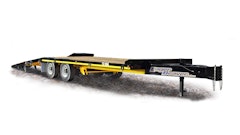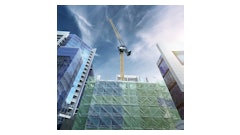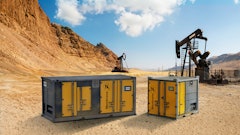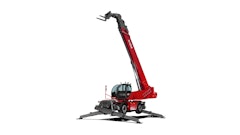For many smaller equipment rental businesses, the process of financial planning is limited to meeting next week’s payroll. There are so many financial fires to put out in a given week that one just can’t find the time to do any short- or long-range financial planning. But failing to plan financially might mean that you are unknowingly planning to fail.
The most effective financial budget includes both a short-range month-to-month plan for at least a calendar year and a quarter-to-quarter long-range budget for at least three years. If you are one of the many rental company owners who never quite gets around to preparing a financial plan, you certainly aren’t alone. You might have tried it in the past and become discouraged by the many financial variables that go into a good budget, or you might have done a budget only to have it blow up in the second month because of an unexpected occurrence like a major repair.
It’s true that no one can predict the future, and no financial plan ever turns out right on the money. What a good budget does is allow you to plan ahead for capital expenditures, revenue growth, increased supplier prices, economic changes, etc.
Why budget?
The key reason to budget is financial control. Financial control enables you as an owner to better accomplish important big picture and day-to-day financial objectives. Budgeting helps you become a better macro-manager by enabling you to:
- Manage pro-actively rather than reactively.
- Make it easier to borrow money. Not only can you plan ahead better for financing needs, but sharing your budget with your banker will help in the loan approval process.
- Provide financial planning information for investors.
- Make your operation more profitable and efficient.
- Provide yourself with a great decision-making tool for key financial considerations.
Budgeting helps you become a better micro-manager by enabling you to:
- Avoid investing too much money in inventory and/or fixed assets.
- Maintain working capital needs more efficiently.
- Set sales goals. You need to be growth oriented, not just an “order taker.”
- Improve gross profit margin by pricing your services more effectively or by reducing supplier prices, direct labor, etc. that affect Cost of Goods Sold.
- Operate more efficiently by keeping SG&A expenses down more effectively.
- Perform tax planning.
- Plan ahead for employee benefits.
- Perform sensitivity analysis with the variables involved.
When to budget?
As mentioned, budgeting is most effective when both a short- and long-range plan are maintained. The short-range budget should cover a fiscal year for your equipment rental business coinciding with the year-end you use for financial statement reporting. It should be prepared during the two months preceding the fiscal year-end to allow ample time for sufficient information gathering.
The long-range plan should cover a period of at least three years (some go up to five years) on a quarterly basis, or even on an annual basis. The long-term budget should be updated when the short-range plan is prepared.
While some owners prefer to leave the one-year budget unchanged for the year for which it provides projections, many owners adjust the budget during the year based on certain financial occurrences, such as an unplanned asset purchase or a larger-than-expected upward sales trend. Using the budget as an ongoing planning tool during a given year certainly is recommended, however, here is a word to the wise: Financial planning is vital, but it is important to avoid getting so caught up in the budget process that you forget to keep doing business.
What to budget?
Many financial budgets provide a plan only for the income statement, however, it’s important to budget both the income statement and balance sheet. This enables you to consider potential cash flow needs for your entire operation, not just as they pertain to income and expense items. For instance, if you’re adding a new line of small equipment such as leaf blowers, you will need to consider the impact of inventory purchases on cash flow.
Budgeting the income statement only also doesn’t allow a full analysis of potential capital expenditures on your financial picture. For instance, if you own your own shop and are planning to purchase additional real estate for your operation, you need to budget the effect the added debt service will have on cash flow. Or if you lease and are expanding or are planning significant leasehold improvements, you need to consider the effects of higher rent payments.
Here are the categories that you need to include in a financial plan:
Income Statement
- Sales
- Cost of Goods Sold
- Gross Profit
- Operating Expenses
- Operating Profit
- Other Income
- Other Expenses
- Net Income Before Taxes
- Income Taxes
- Net Income After Taxes
Balance Sheet
- Cash
- Accounts Receivable
- Inventory
- Other Current Assets
- Total Current Assets
- Attractions, Real Estate and other Fixed Assets
- Other Assets
- Total Assets
- Notes Payable — Short Term
- Current Maturities of Long-Term Debt
- Accounts Payable
- Accrued Expenses
- Taxes Payable
- Stockholder Loans
- Other Current Liabilities
- Total Current Liabilities
- Long-Term Debt
- Deferred Taxes
- Other Long-Term Liabilities
- Total Liabilities
- Stockholder’s Equity
- Total Liabilities and Stockholder’s Equity
Cash Flow
- Net Income After Taxes
- Depreciation & Amortization
- Decrease in Accounts Receivable
- Decrease in Inventory
- Increase in Accounts Payable
- Loan Proceeds
- Total Cash Available
- Owner’s Draw
- Current Maturities of Long-Term Debt
- Capital expenditures
- Increase in Accounts Receivable
- Increase in Inventory
- Decrease in Accounts Payable
- Total Disbursements
- Cash Flow For Period (Month, Quarter)
- Cumulative Cash Flow
Yes, this seems like a lot of information to try to forecast, but it’s not as cumbersome as it looks. You should have the information at your disposal that provides the impetus to prepare your financial plan. All you need is your accountant-prepared year-end financial statement to get started.
How to budget?
With the accountant-prepared financial statement in hand, you’ve already won half the battle in preparing a financial plan. You will also need historical monthly financial statements.You might prepare your own on internal financial reporting software, or you might have your CPA involved in putting together a monthly financial statement. It really doesn’t matter for budgeting purposes, just so you have a monthly statement with which to work.
The next thing you need is a PC with spreadsheet capability. If you are reasonably proficient on a PC or have someone on your staff who is, you can build your own budget spreadsheets on software such as Microsoft Excel. It’s highly recommended, however, that you purchase a good budget software package. These inexpensive packages such as M.Y.O.B. Premier 1.0 (M.Y.O.B. Software), Peachtree for Windows 6.0 (Sage Software), QuickBooks Pro 6.0 (Intuit) or One Write Plus 7.0 (Sage Software), all can be acquired for under $1,000. The budgeting process is easier when the format is provided in an easy-to-use software package.
The first step is to set up a plan for the following year on a month-to-month basis. Starting with the first month, establish specific budgeted dollar levels for each category of the budget. With each category it’s recommended that you break it down into subcategories. For instance, for sales go ahead and budget separately lawn equipment, light construction equipment, etc. Budget the same breakdown for cost of goods sold. For operating expenses, consider line items such as advertising, auto, depreciation, insurance, etc.
On the balance sheet, breakdown inventory by type. Consider each specific item in fixed assets broken out for real estate, equipment, investments, etc. On the liability side, breakdown each bank loan separately. Do the same for the components of stockholder’s equity -— common stock, preferred stock, paid-in-capital, treasury stock and retained earnings.
Do this for each month for the first 12 months. Then, prepare the quarter-to-quarter budgets for years two and three. For the first year’s budget, you will want to consider seasonality factors in preparing the budget. For most equipment rental businesses, warm weather months produce more revenue, which results in wide-ranging changes in cash flow needs. For this reason, you will want to consider seasonality in the budget rather than take your annual projected year one sales level and divide by 12.
As for the process, you will need to prepare the income statement budgets first, then balance sheet, then cash flow. You will need to know the net income figure before you can prepare a pro forma balance sheet, because the profit number must be plugged into retained earnings. And for the cash flow projection, you will need both income statement and balance sheet numbers.
In preparing the pro formas, you will want to use your historical performance as your starting point for assumptions. Look at the numbers for the previous three years of your operation to help with both the short- and long-range financial plan. If your sales have grown an average of 10 percent over the past three years, then this might be a good indicator of how to project revenue growth for the next year. There are many other factors you will need to consider. Some of them include:
- Expense cutting plans
- Purchases/renovations of assets
- Acquisition plans of other stores
- Increases in rental rates
- Opening or closing of store, etc.
- Competitive factors, particularly if a new rental business is opening or a competitor is closing a nearby shop
- Changes in supplier prices
- Interest rate environment for bank debt
- Changes in tax rates
- Changes in occupancy expense
- Changes in insurance premiums
It’s advisable to involve your CPA in the financial planning process. His/her role will depend on the internal resources available to you and your background in finance. You might want to hire your CPA to prepare the financial plan for you, or you might simply involve him/her in an advisory role. Regardless of the level of involvement, your CPA’s input will prove invaluable in providing an independent review of your short-term and long-term financial plan.
Sensitivity analysis
One other major benefit of maintaining a financial plan is the ability to perform sensitivity analysis. Once you have a plan in place, you can make adjustments to it to consider the potential effects of certain variables on your operation. All you have to do is plug in the change and see how it affects your business’s financial performance.
Here’s how it works: Let’s say you have budgeted a 10-percent sales growth level for the coming year. You can easily adjust the sales growth number to 5 or 15 percent in the budget to see how it affects the performance of your rental business. You can undertake sensitivity analysis for any other financial variable as well. The most common items for which sensitivity analysis is done are:
- Sales
- Cost of Goods Sold and Gross Profit
- Operating Expenses
- Interest Rates
- Accounts Receivable Days On Hand
- Inventory Days On Hand
- Accounts Payable Days On Hand
- Major Fixed Asset purchases or reductions
While financial planning takes a considerable amount of time and effort, particularly on the front end, it is well worth it. The benefits gained far outweigh the sacrifice of time and will have a long-term positive impact on the financial performance of your equipment rental business.


























